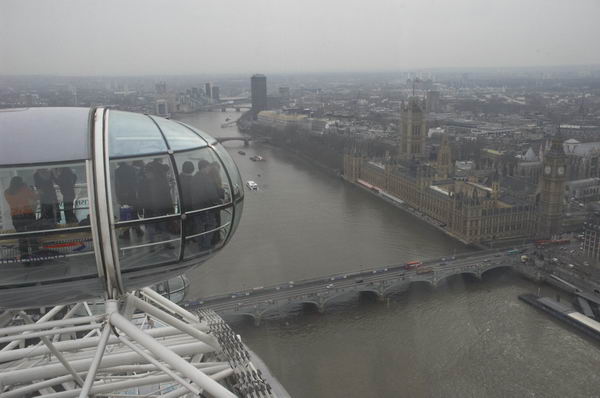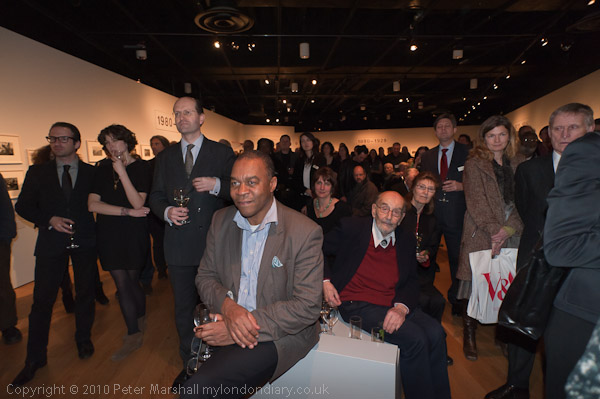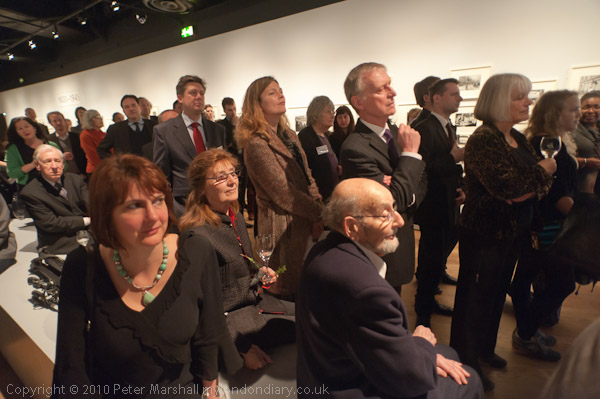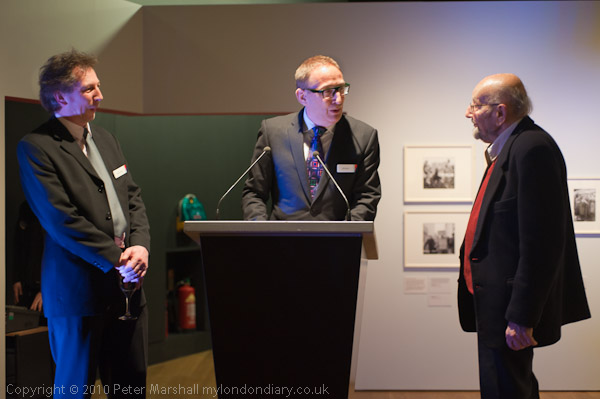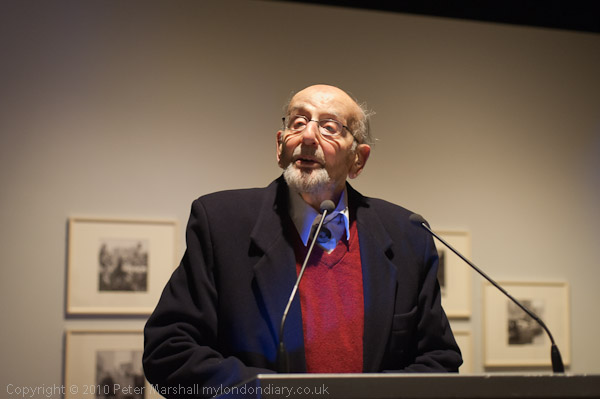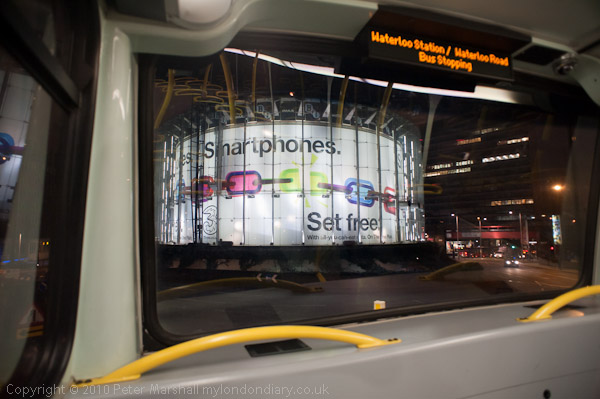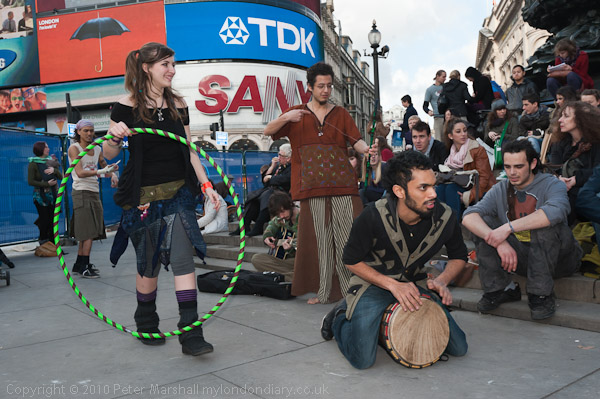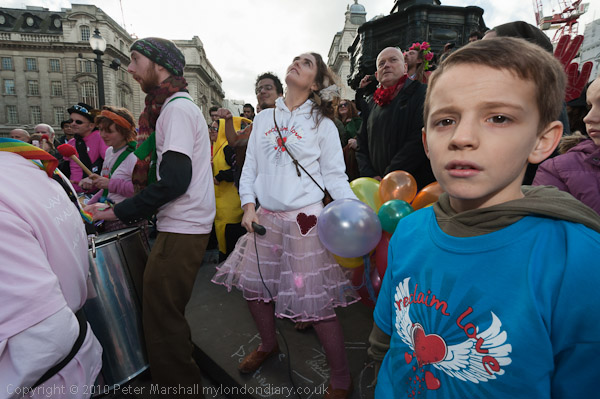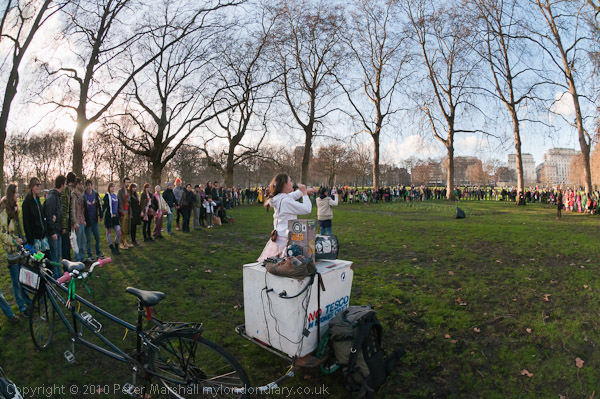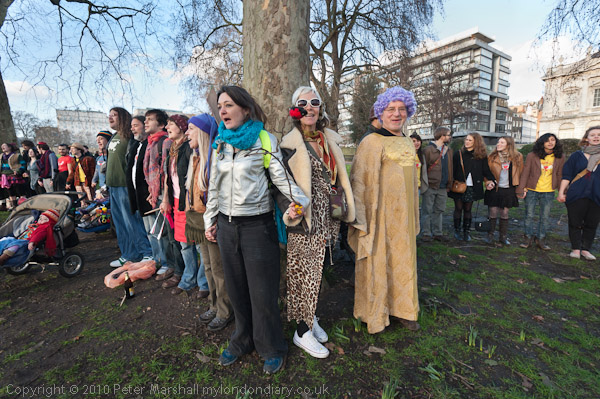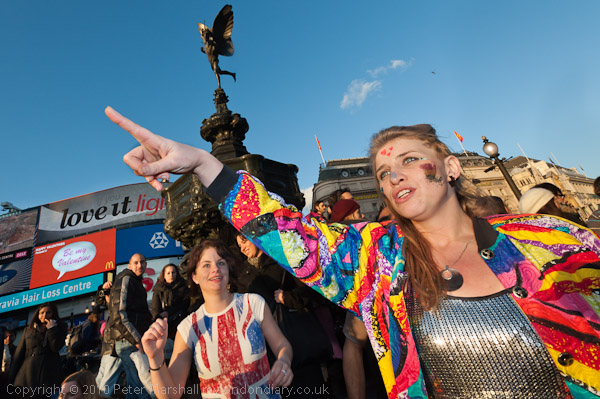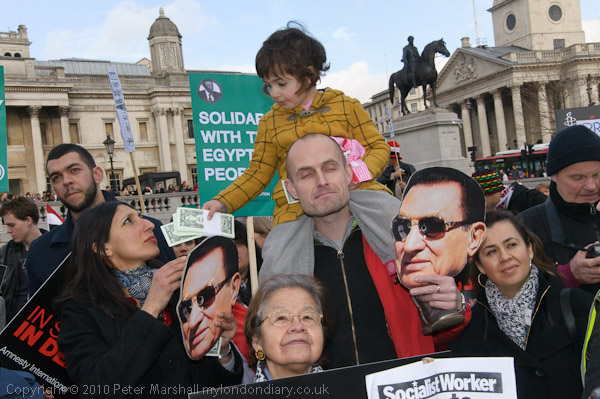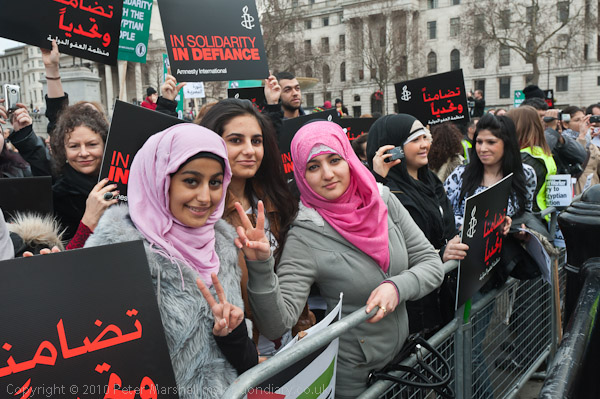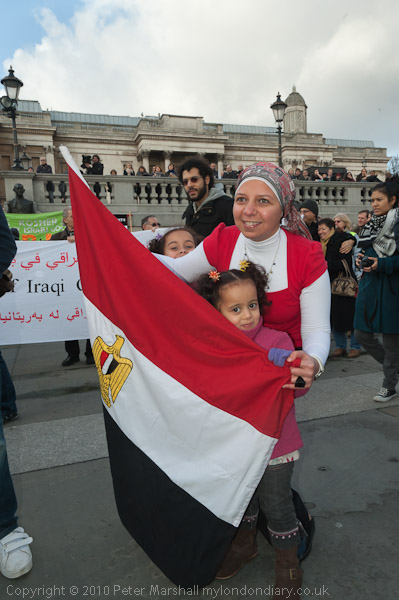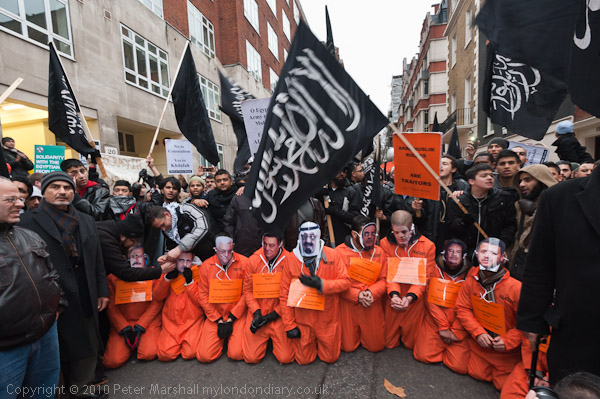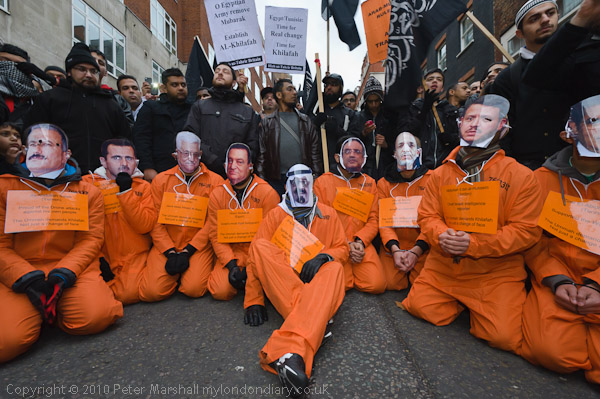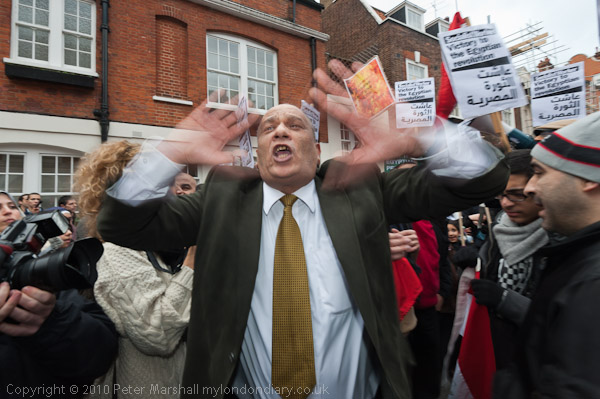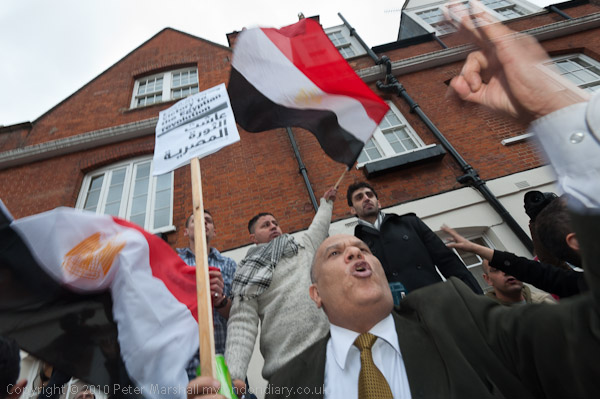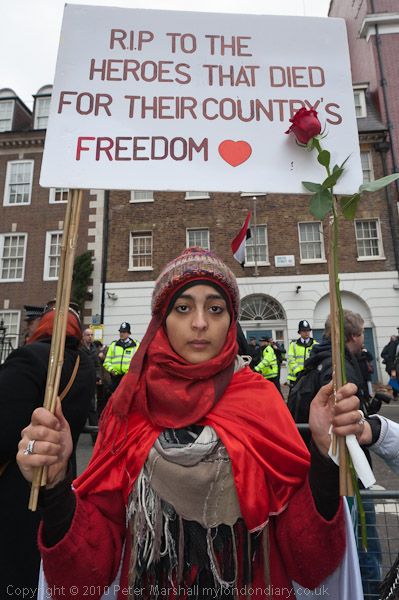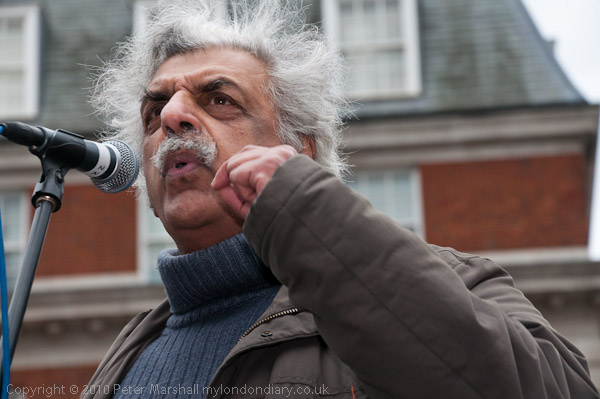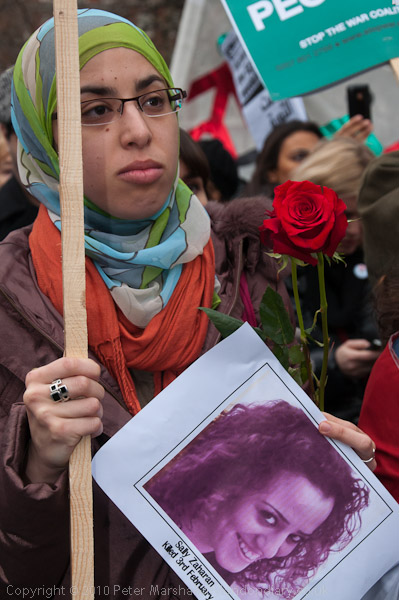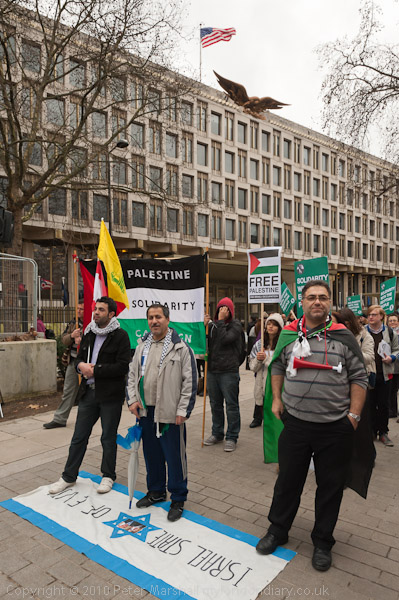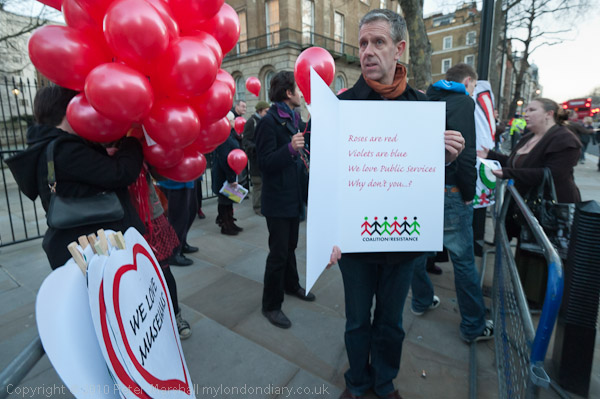
The ‘Coalition of Resistance’, an alliance against cuts in public services, had decided to take advantage of St Valentine’s Day to send PM David Cameron a large Valentine card, with the message ‘Don’t Break Our Hearts’ and inside the text: ‘Roses are Red, Violets are Blue, We love Public Services, Why don’t you?‘
Unfortunately, when I pulled my flash out of my bag and stuck it into the hot shoe to take the picture above, I turned it on and nothing happened. The batteries had been fully charged after I’d used them previously, but somehow they had managed to run down inside my bag. Perhaps I’d left the flash on and at some point something had pressed down on the flash test button and it had been flashing away unseen inside the bag.
Of course I carry a spare set of batteries, but there wasn’t time to change them and get that shot of the card, although I might have been able to take one later. The D700 does have a built in flash, but unfortunately that is pretty useless when using a physically large wide-angle lens such as the Nikon 16-35mm (its at least twice as long as any lens covering that range has a right to be) as the lens casts a shadow in the bottom half of the picture. So I had to shoot by available light, and there was not a great deal around. But atISO 1600 there was enough to get 1/80 at f4.5, though probably it would have been better to stop down a little more to get better depth of field.
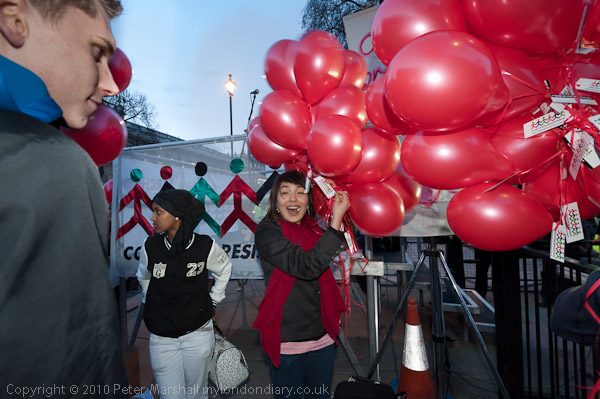
But after that I fitted the spare set and was able to take some pictures using flash, which certainly helped with this one, where the woman holding the balloons would have been in deep shadow without it.
As it got really dark, I was surprised at how little light there really was on Whitehall, one of London’s best-known streets. Although the street itself was fairly light, on the wide pavement where this protest was taking place it was really rather dim.

For the picture above without flash at ISO 3200, I needed 1/30 f4.
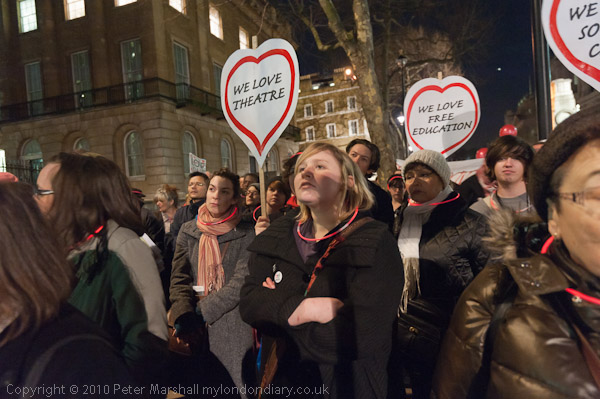
And a little later, I was having to work at 1/15 f4 for this image. Still at ISO 3200, though since I was underexposing by a stop to get some idea of darkness, I suppose that was really ISO6400.
For photographing the speakers I needed a longer lens, and although I took a few at around 2-300mm, the most interesting were using the Nikon 18-105mm on the D300:
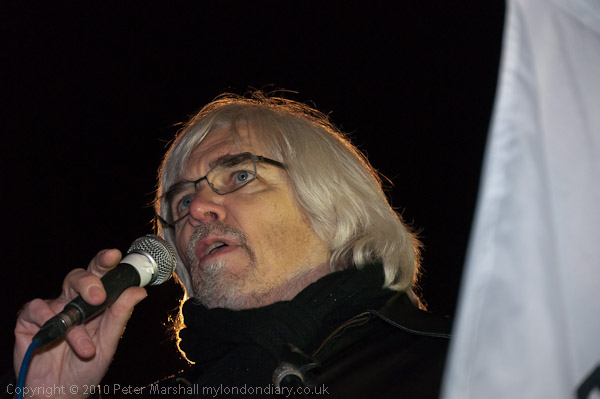
One of the street lights was directly behind the speakers (Paul Mackney in this picture, though I used the same effect on several others) , and some distance away, but by carefully choosing my position I could use it to give some rim lighting. Virtually all the light on his hand and face is from my flash mounted on the hot shoe. Using ISO 640 with the flash at f5.6 gave me enough depth of field – the focal length for this series of pictures was around 90-100mm – and the shutter speed of 1/60 resulted in just about the right amount of light in the hair.
More pictures at Valentine Protest – We Love Public Services on My London Diary.
